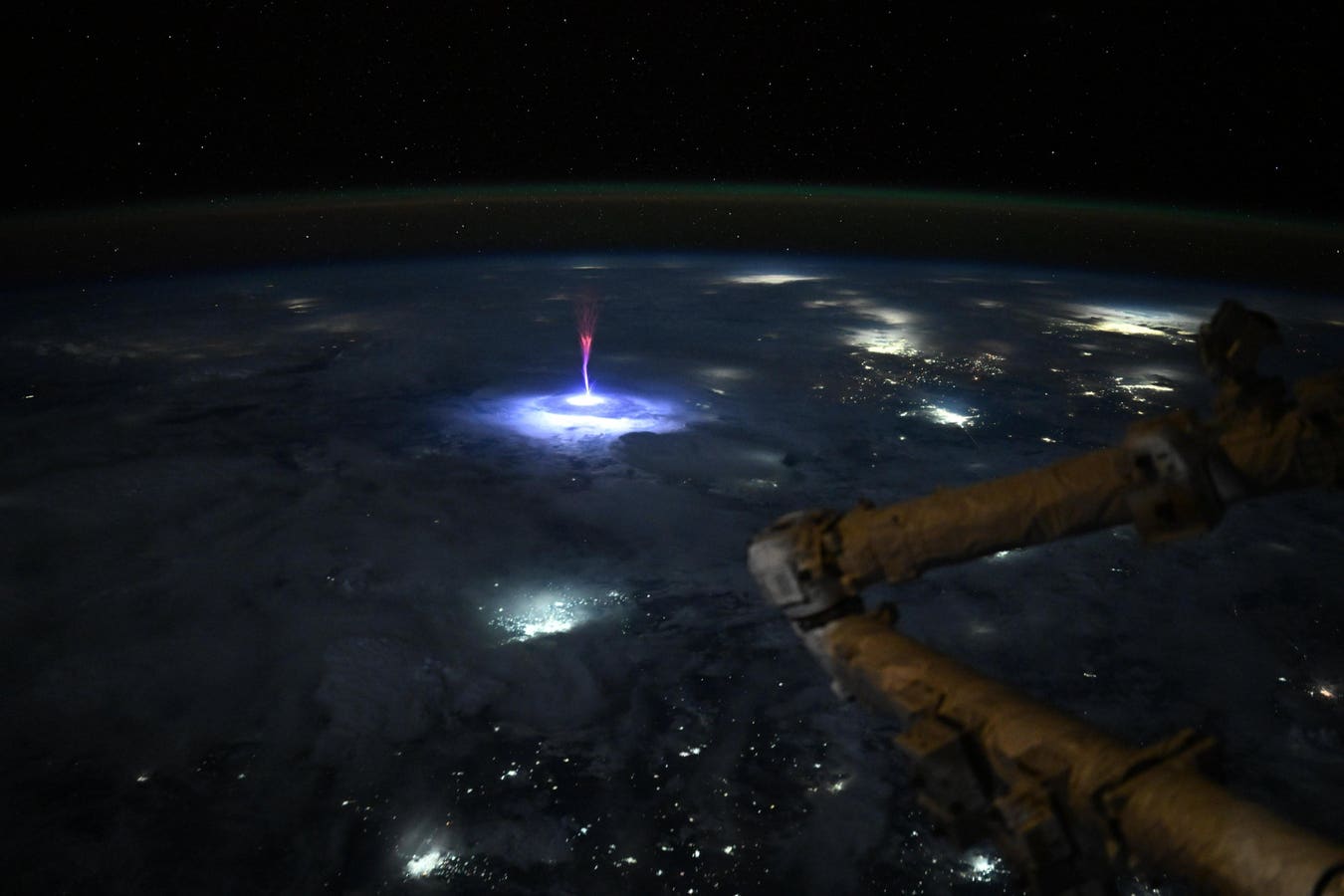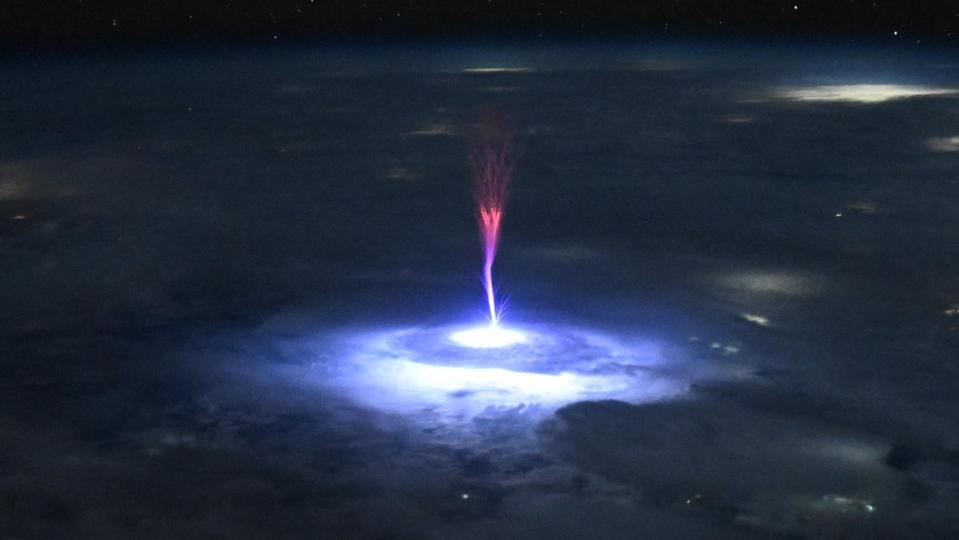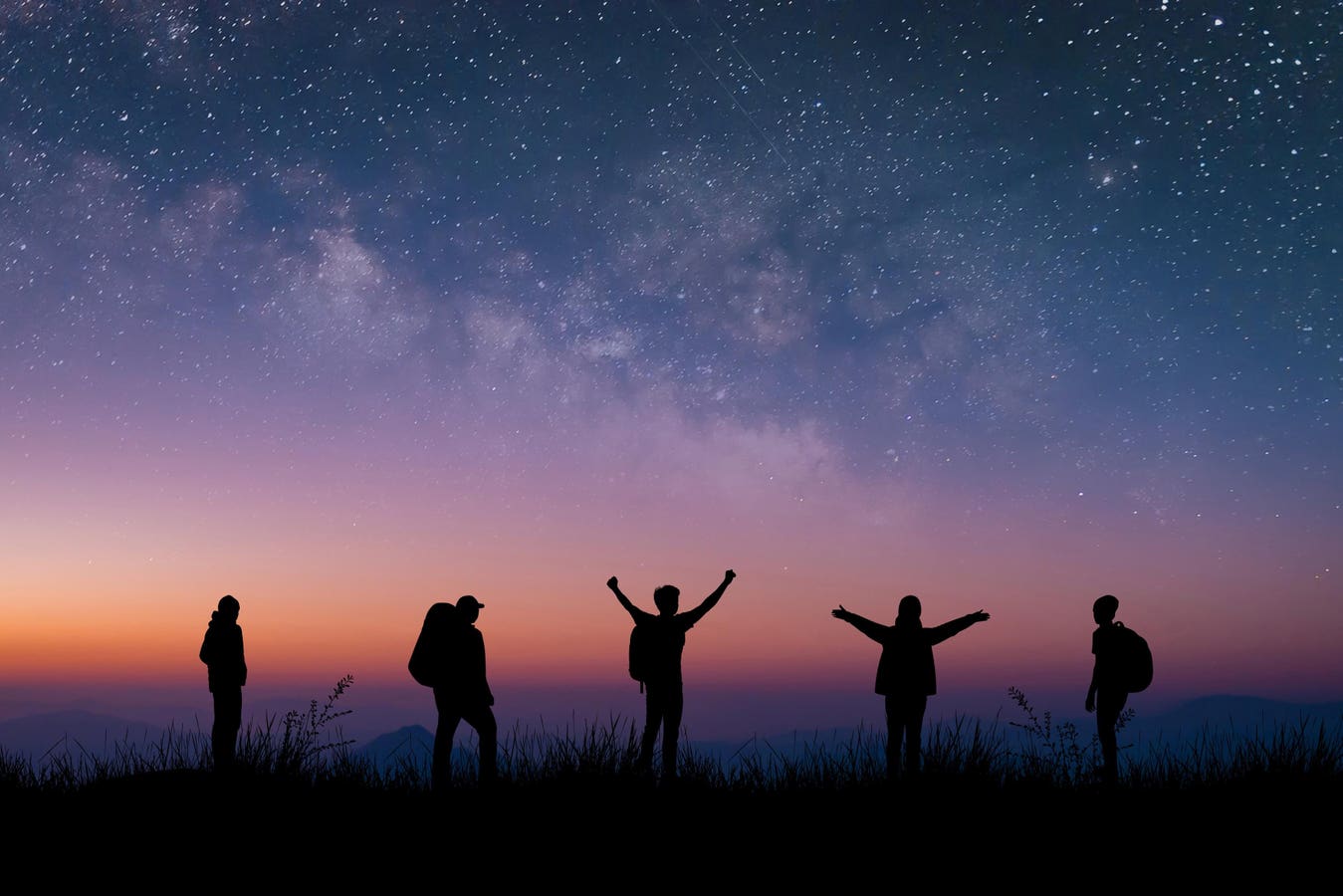A “sprite” over Mexico as seen from the International Space Station on July 3, 2025 by astronaut … More
An astronaut on the International Space Station has captured a rare kind of lightning called a sprite while traveling 250 miles above the Texas–Mexico border. Referred to as “space lightning” and compared to a jellyfish in shape, the rare weather phenomenon was captured on camera by NASA astronaut Nichole Ayers.
The rare image was taken on July 3 by pilot Nichole Ayers, who launched to the ISS on March 14, 2025, as part of the SpaceX Crew-10 mission. It shows an ethereal crimson jellyfish-like flash shooting from the tops of clouds and into space. It’s known as a “red sprite,” but also as a transient luminous event, lightning in Earth’s upper atmosphere. According to NASA, these colorful, bright, faster-than-lightning flashes are generated above the clouds by thunderstorms.
Ayers’ Explanation Of The ‘Sprite’
“Just. Wow. As we went over Mexico and the U.S. this morning, I caught this sprite,” wrote Ayers on X/Twitter. “Sprites are TLEs or Transient Luminous Events that happen above the clouds and are triggered by intense electrical activity in the thunderstorms below. We have a great view above the clouds, so scientists can use these types of pictures to better understand the formation, characteristics, and relationship of TLEs to thunderstorms.” In a later message, she stated that it was a gigantic jet, another type of TLE. “So cool to learn as we go up here,” she wrote.
The image also shows the glow of Dallas, Austin, San Antonio and Houston to the northeast, with Torreón, Mexico, to the southwest. “Our hearts go out to the families affected by the flooding in the Texas Hill Country this weekend,” added Ayers.
A “sprite” over Mexico as seen from the International Space Station on July 3, 2025 by astronaut … More
How The Image Was Taken
The ISS is the best observation point humankind has for monitoring Earth at night but photographing lightning takes a huge amount of patience and trial and error. Astronauts on the ISS take photos from the Cupola (Italian for dome), an observatory module that has seven windows and allows photography of Earth. Ayers took the shot using a Nikon Z9 and a 50mm lens as part of a time-lapse project during which she took multiple images. “To record a photo like this takes skill to set up the camera but more than that, the knowledge of what lightning systems are likely to create sprites and the willingness to take 2000-5000 images where only one will record a sprite,” wrote NASA astronaut and astrophotographer Don Pettit on X/Twitter, who arrived back from the ISS on April 19. “Kudos to Nicole for her imagery efforts!”
The Moon’s shadow, or umbra, is pictured covering portions of the Canadian provinces of Quebec and … More
The ISS And The ‘Great North American Eclipse’
Perhaps the most widely seen images taken from the ISS were those of the total solar eclipse on April 8, 2024. NASA flight engineers Matthew Dominick and Jeanette Epps captured unique views of the moon’s shadow over part of Maine, U.S. and Quebec and New Brunswick, Canada. For the shots, NASA carefully adjusted the altitude of the orbiting laboratory for months, leading up to the final total solar eclipse in the contiguous U.S. until 2044.
Wishing you clear skies and wide eyes.









